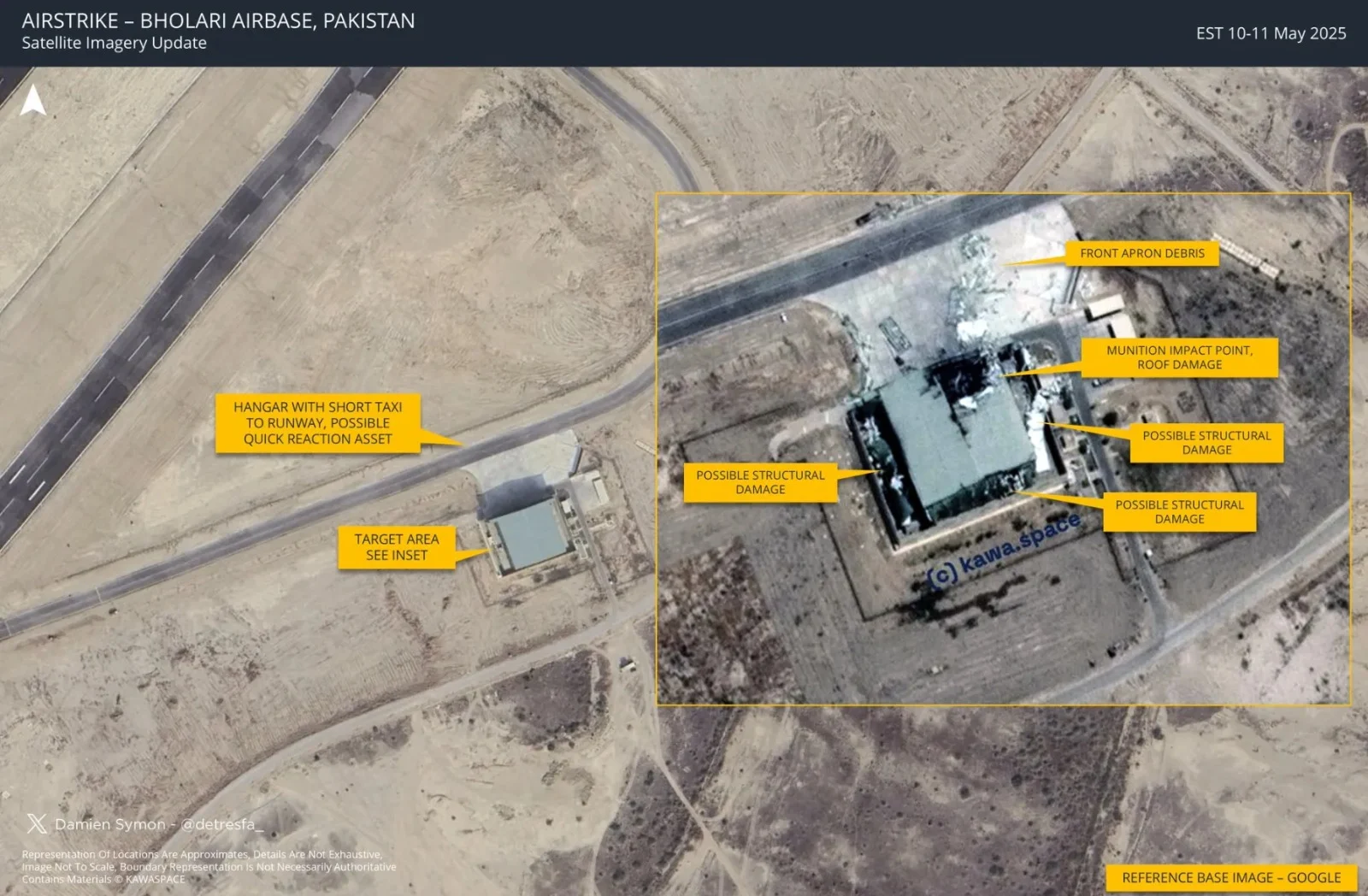Pakistan’s Bholari Airbase struck heavily, SAAB-2000 AWACS destroyed

The Pakistan Air Force (PAF) has suffered a significant blow through a direct missile strike on PAF Base Bholari near Hyderabad, Pakistan, resulting in the destruction of a critical Saab 2000 Erieye Airborne Early Warning and Control System (AWACS) aircraft.
There were multiple other casualties including Squadron Leader Usman Yousaf a hero of PAF. The precision strike, targeted one of most important air assets of nuclear-armed Pakistan.
The strike on Bholari Airbase was part of a coordinated Indian military response following attempted drone and missile attacks by Pakistan on Indian military installations. In response India targeted multiple Pakistani airbases, including four major facilities: Bholari (Jamshoro), Sargodha, Kamra (Attock), and Shahbaz.
Earlier India had neutralised a Pakistani attempt to strike military stations in Jammu, Pathankot, Udhampur, and other locations. Dramatic footage show an Indian “ballistic missile” striking Pakistan’s Nur Khan Airbase near Islamabad, demonstrating the broad scope of India’s strike campaign.
Pakistan had launched drone attacks targeting UT of Kashmir for a second consecutive evening on Friday, with drones over Jammu, Samba, and Pathankot regions. This prompted the subsequent Indian response targeting Pakistan’s air power infrastructure, with a specific focus on high-value air assets like the AWACS platform at Bholari.
The missile strike on Bholari Airbase reportedly hit with precision, striking a hangar where the Saab-2000 Erieye AWACS aircraft was stationed. The aircraft was engulfed in flames following the direct hit. Squadron Leader Usman Yousaf, identified in social media reports as a PAF hero, was among those killed in the attack.
The targeting of the Erieye AWACS represents a significant tactical decision in India’s strike planning. This follows an earlier incident where India shot down a Pakistani AWACS aircraft inside Pakistan’s Punjab province during a previous exchange. The Bholari strike appears to continue a deliberate strategy of degrading Pakistan’s airborne surveillance capabilities.
The destruction of two Paki AWACS aircraft represents a critical blow to Pakistan’s air defence and surveillance capabilities. Pakistan operates a fleet of nine Saab-2000 Erieye Airborne Early Warning and Control aircraft, with the last unit delivered as recently as July 2, 2024. These specialised platforms serve as the nerve centre of aerial combat operations, providing Pakistan with comprehensive airborne surveillance through 270-degree radar coverage.
The AWACS platform plays a vital role in modern air warfare, functioning as an airborne command and control centre that can detect enemy aircraft, direct friendly forces, and coordinate battlefield operations. The loss of even one such asset significantly degrades Pakistan’s ability to monitor Indian air movements and coordinate effective defensive operations. This strategic impact extends beyond the material value of the aircraft itself, potentially compromising Pakistan’s broader air defence network during a period of heightened tensions.
Pakistan’s response has been to shut down airspace following the strikes on multiple airbases. A Pakistani military spokesperson’s warning about an impending response suggests that military planners are considering retaliatory options, raising concerns about further escalation between the nuclear-armed neighbours. Pakistan’s air defence systems reportedly attempted to intercept the incoming Indian strikes, but failed miserably to intercept the incoming Indian ballistic missile.
The current escalation begun with Pakistani drone and missile attacks on Indian military installations, followed by India’s defensive response and subsequent offensive strikes. India reportedly activated its “full spectrum of anti-drone and low-altitude air defence systems” to counter the initial Pakistani attacks, including S-400s, L-70 anti-aircraft guns, and Soviet-origin ZSU-23-4 Schilka systems deployed near critical installations.
The destruction of a strategic AWACS platform and the targeting of multiple Pakistani airbases suggest that the deliberate targeting of high-value aviation assets. It indicates India’s intent to degrade Pakistan’s air surveillance and command capabilities rather than simply responding with equivalent strikes against similar targets.
The targeting of strategic air assets like the AWACS platform demonstrates the India’s resolve to hit command, control, and intelligence capabilities as priority targets. How Pakistan chooses to respond to this significant loss will likely determine whether the situation stabilizes or escalates further in the coming days.




